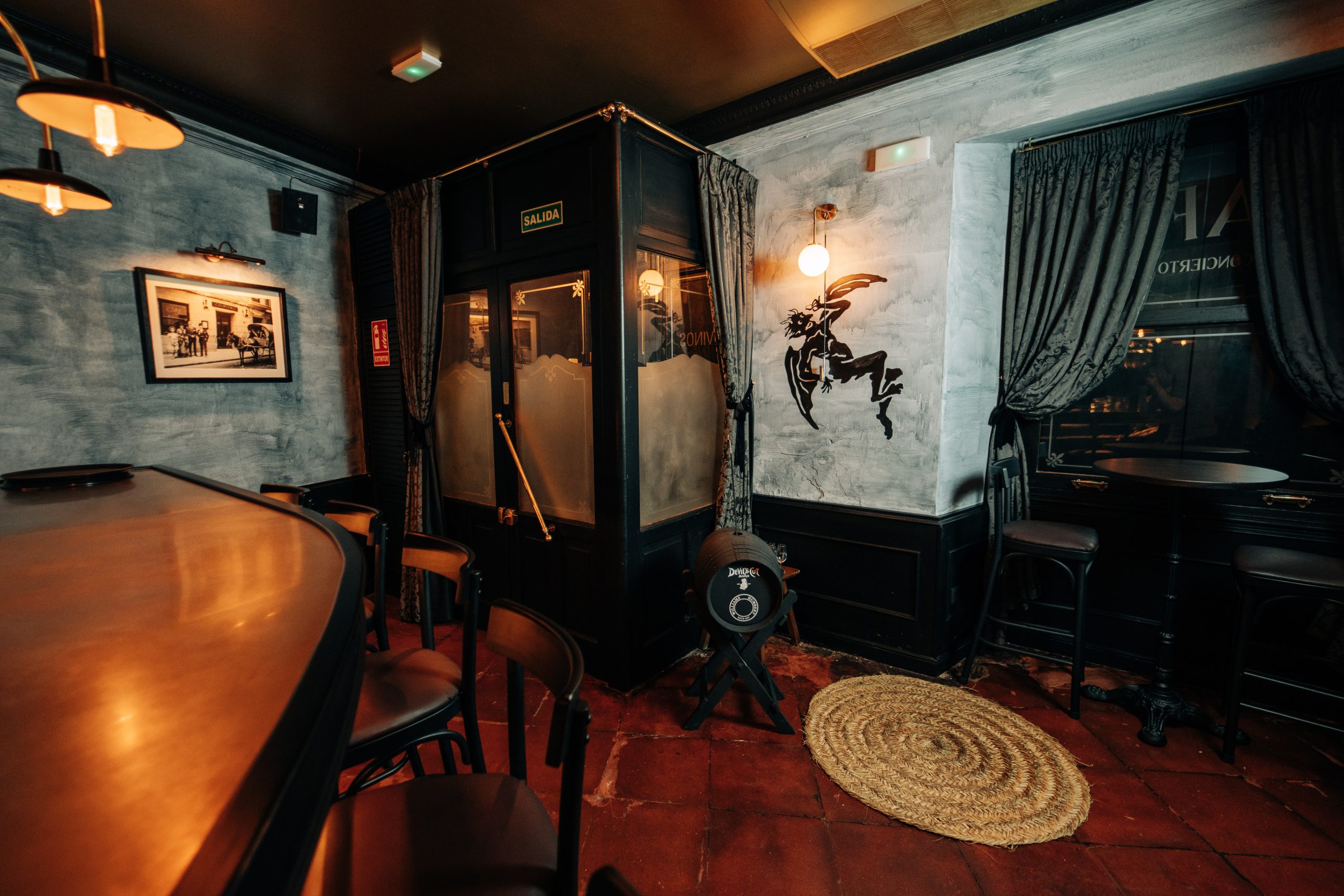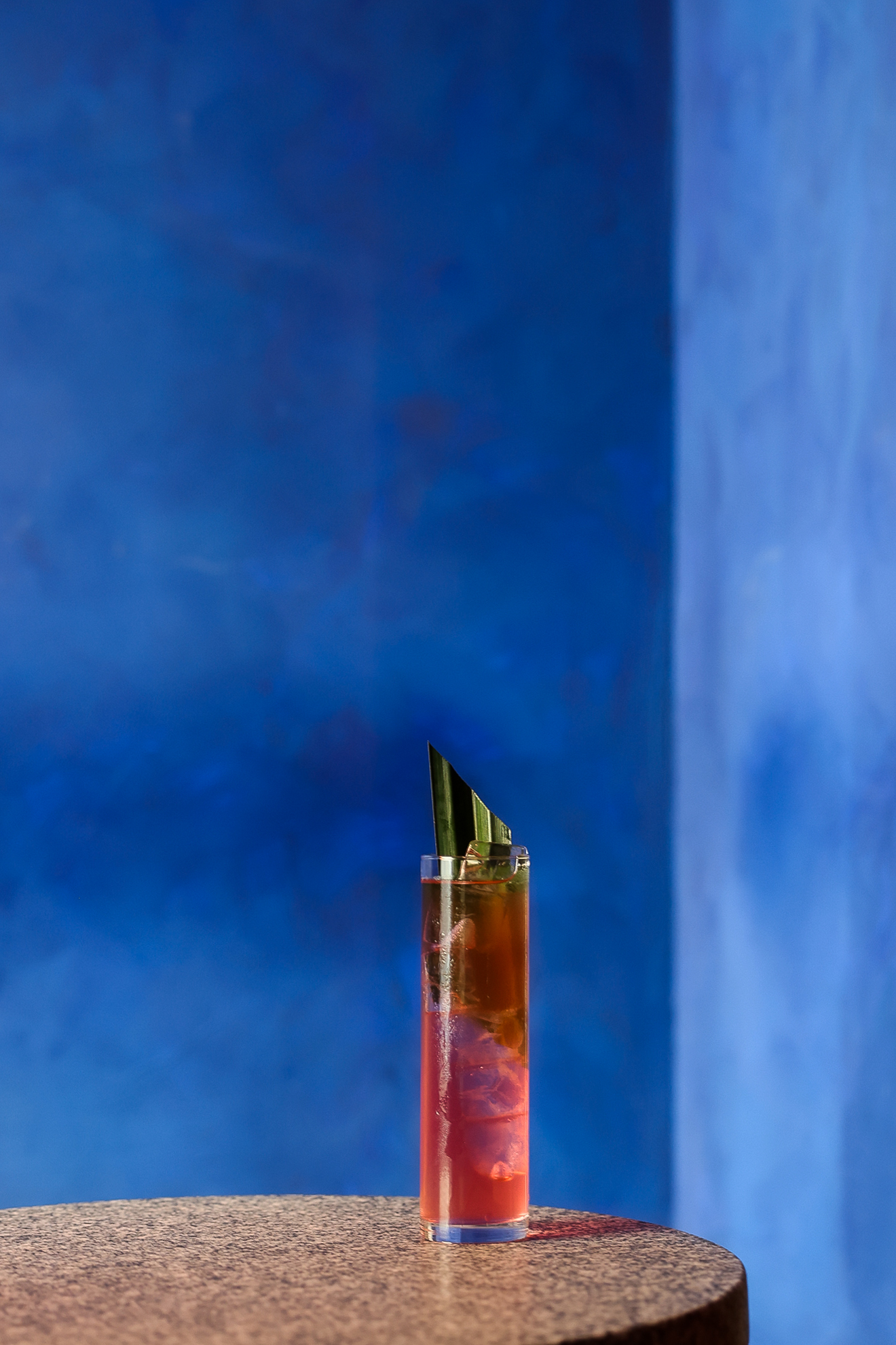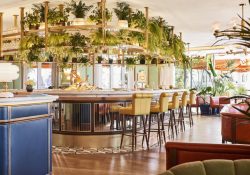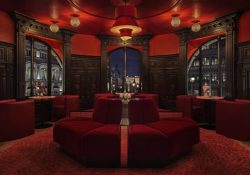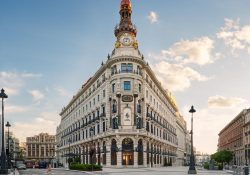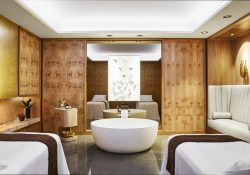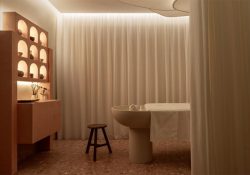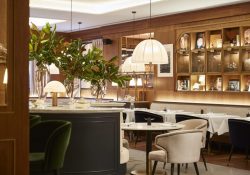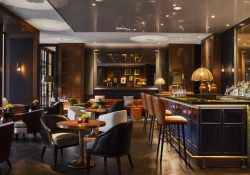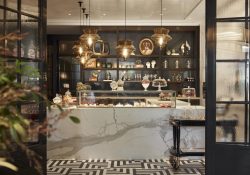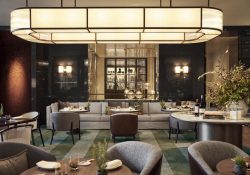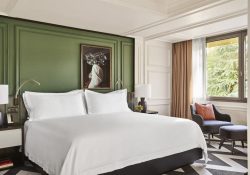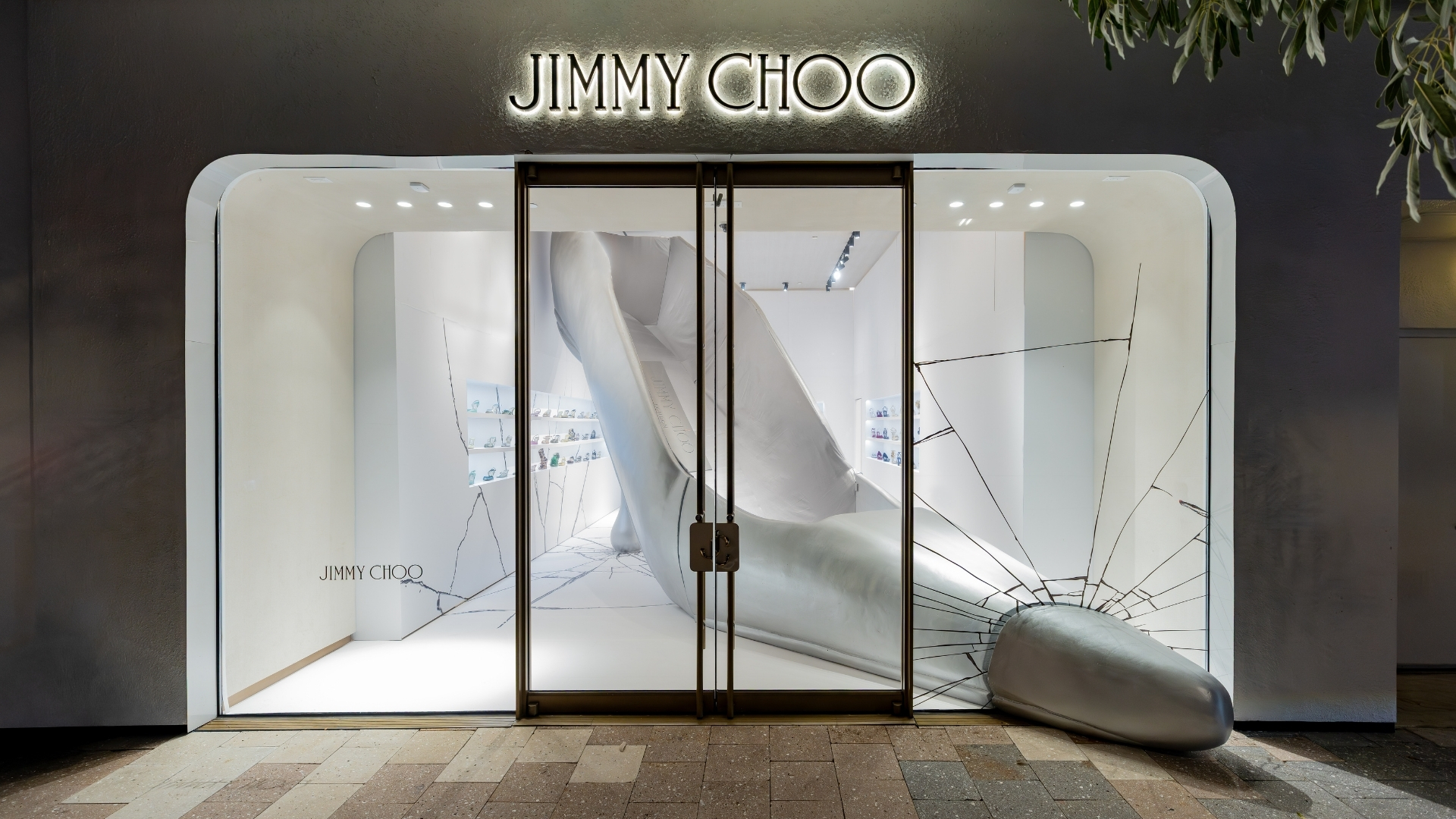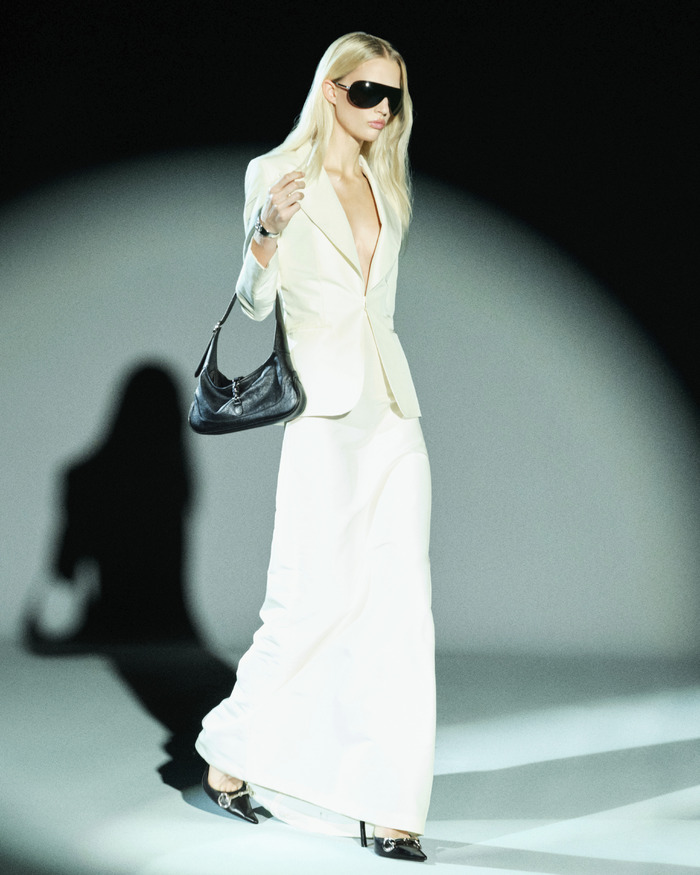The Ultimate Luxury Guide To Madrid
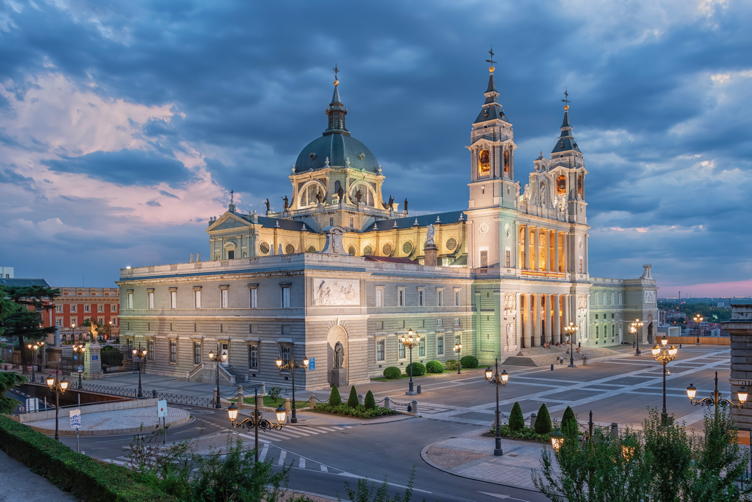
Photo Credit: Stockbym/Shutterstock.com
Spain’s capital city is a feast for the eyes, a modern hub with a distinctly old world feel. There’s enough to do and see to fill a week with landmark locations like the Plaza Mayor, the Royal Palace of Madrid; the Royal Theatre with its restored 1850 Opera House; the Buen Retiro Park, and the Golden Triangle of Art, located along the Paseo del Prado (inclusive of the world famous Prado Museum), but when you factor in its thriving F&B scene, you may never want to leave. Here are the things you absolutely should not miss when visiting Villa del Oso y el Madroño (the City of the Bear and the Strawberry Tree).
HOTELS
Four Seasons Hotel Madrid
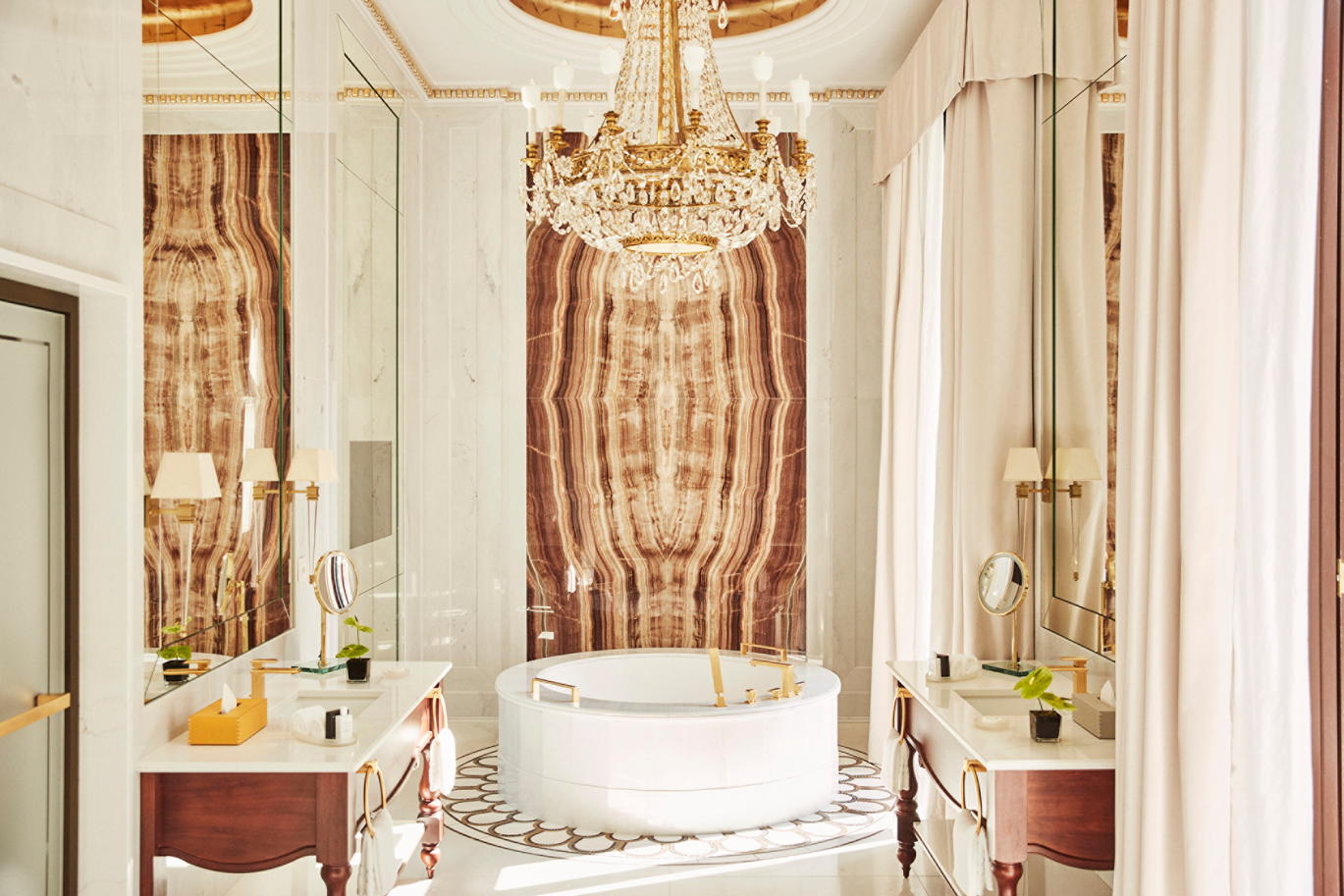
Photo Credit: Four Seasons Hotel Madrid
There are a plethora of five-star properties throughout the city, but if you’d like to stay close to the city center, the Four Seasons Hotel Madrid should be your option of choice. Indeed, Retiro Park, the Prado Museum, the Reina Sofía National Museum and Art Center, the Puerta de Alcalá, and the Plaza de Cibeles, among others, are all accessible by foot. It’s an awe-inspiring property from the second you arrive and see a gigantic statue created by Kaws that said artist donated to the property’s owner.
Located in the heart of the Spanish capital, Four Seasons Hotel Madrid offers a sophisticated stay with 200 rooms, 22 private residences, three restaurants each with a particular form of gastronomy, the largest wellness centre in the city, various function rooms and direct access to the most exclusive shopping destination in Madrid — Galería Canalejas — boasting a collection of the most well renowned international luxury brands.

Photo Credit: Four Seasons Hotel Madrid
Following seven years of meticulous restoration and reconversion — led by architects at Estudio Lamela in Madrid with a team of international designers that includes BAMO, BG Architecture, Martin Brudnizki, AvroKO, and Luis Bustamante — on a set of seven historically and architecturally valuable buildings, more than 16,000 pieces were removed, catalogued, and restored — Many of which can now be found in the suites and common areas around the hotel, such as green marble pillars with gold-plated capitals that decorate the lobby and the original stained glass window from its previous life as a bank.
Speaking of pieces, art is an important theme here as well. In addition to the Kaws piece, the hotel hosts an impressive collection of original works of art by emerging Spanish artists that includes paintings, photographs, engravings and sculptures, as well as replicas of original works of art that can be found in the National Thyssen-Bornemisza Museum, which is a short distance away. A large part of this contemporary art collection is the result of a contest that took place between the schools of Fine Arts at the universities of Madrid, Malaga and Seville. The nearly 1,500 works that make up the private art collection of Four Seasons Hotel Madrid can be found in the guest rooms, restaurants and public spaces throughout the hotel, such as the piece entitled Starry Night by the Catalan sculptor Eduardo Perez-Cabrero, which depicts the constellations representing the human virtues of intelligence, creativity, joy, love, talent, generosity, and hope.
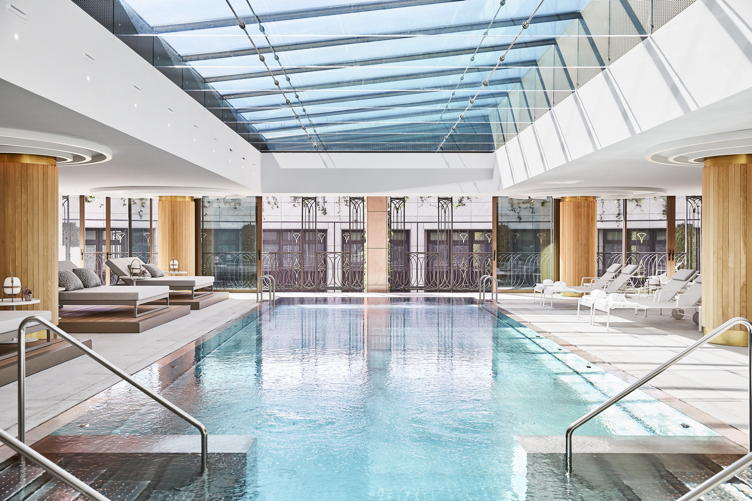 Photo Credit: Four Seasons Hotel Madrid
Photo Credit: Four Seasons Hotel Madrid
The rooms are absolutely gorgeous (I may have even clapped with delight upon arrival). Think: walnut dressing rooms and wardrobes, bathrooms in white, grey, and black marble, and large windows and balconies or terraces with outstanding views of the city. There’s also a distinctive bar area in each guest room boasting black lacquering with copper decorations and mirrors as well as two plaster cast pieces from the San Fernando Royal Academy of Fine Arts.
Our pick for a stay is the Royal Suite., which was once the private office of the bank’s chairmen and board members and retains some of its original features today, such as a fireplace, wood flooring, and beautiful balconies. New elements include a sculpted round bath and a wall of Calacatta Vagli Rosato and Onyx Viola marble.
 Photo Credit: Four Seasons Hotel Madrid
Photo Credit: Four Seasons Hotel Madrid
The property also has some seriously incredible cuisine. Renowned three Michelin starred chef Dani García is the force behind Dani Brasserie; a rooftop restaurant that highlights Andalusian cuisine courtesy of whimsical designer Martin Brudnizki. Isa Restaurant and Cocktail Bar is incredible: an Asian-inspired hot spot with Japanese-style street food from chef Ignacio Vara. Its cocktail menu, created by head bartender Miguel Pérez, is incredible, utilizing innovative distillation techniques with seasonal ingredients that has earned its accolade as the best hotel bar in Spain. Last but not least is El Patio, a lobby restaurant for coffee, tea, and sweets.
And last but certainly not least, the spa. Oh, the spa. It’s a gilded dream, spanning 15,600 square feet set over four floors with eight treatment rooms, featuring products from 111SKIN and ISClinical. Our pick: the Celestial Black Diamond Non-Surgical Face Lift, an anti-aging facial that provides a youthful, sculpted, and firmer appearance aided through diamond absorption. The spa also features an atelier from coiffure master Rossano Ferretti; a 46-foot indoor swimming pool beneath a glass ceiling, accompanied by a sun-soaked terrace with views of the city; and a gym, which offers yoga classes and Pilates, among other activities.
Rosewood Villa Magna
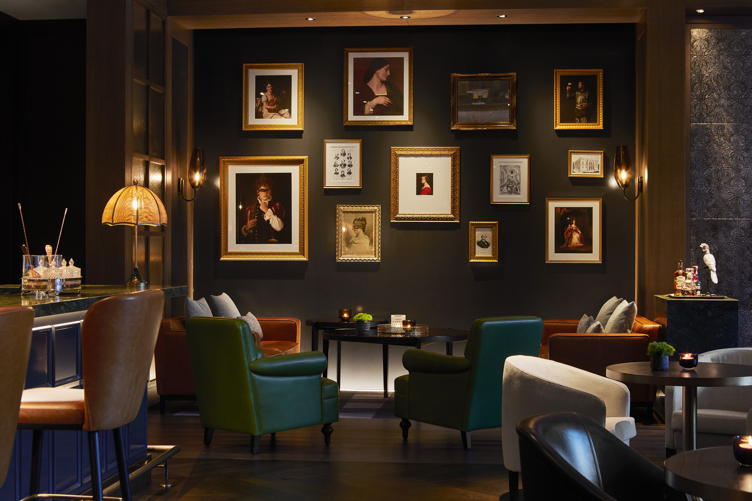
Photo Credit: Rosewood Villa Magna
Our other haute pick is Rosewood Villa Magna, another recently renovated 5-star masterpiece, located on Madrid’s most coveted boulevard, Paseo de la Castellana in Salamanca, an area highlighted by luxury shopping, fine dining, and cultural attractions. It, too, is a recently renovated local landmark, which still embraces the original spirit of the Anglada Palace, the 19th-century building which was the hotel’s first site. Renowned Spanish architect Ramón de Arana led the remodel of the building’s striking façade and entryway, adding a sense of grandeur to the arrival experience via a striking staircase and a pair of reflecting pools that draw attention to the centuries-old, 100-foot-high cedar and carob trees adorning the property. Meanwhile, property’s gardens were transformed by landscape designer Gregorio Marañón to incorporate various trees, bushes, and plants — many of which are adorned with pergolas, sculptures, and fountains — for a secret garden feel.
Australian firm BAR Studio paid tribute to modern day Madrid — which, as I’ve mentioned, is a combination of past and present — paying homage to the original palace and hotel while infusing a new, contemporary character throughout through materials such as stone, iron, and glass. Its interiors are further enhanced by the comprehensive art collection, carefully chosen and commissioned by the English company ArtLink — many pieces of which focus on those who have walked through its hallowed halls. A standout is the specially commissioned work by Jacky Puzey in the lobby.

Photo Credit: Rosewood Villa Magna
The feel of the rooms is luxury private home. There are 101 guestrooms, 49 suites, and four signature houses, all of which balance the ambiance of a contemporary Spanish villa with the signature aesthetic of the original Villa Magna hotel. Each guest room has an avant-garde touch outside, but the inside is clean and simplistic with a chromatic color palette, bath amenities by Maison Caulieres, and linens by Rivolta Carmignani.
The top floor Royal Anglada House is the hotel’s largest suite, which features two bedrooms, a work studio, an outdoor terrace, a dining room, a living room, and elevated kitchen space. Unique elements of the space include artwork chosen specifically to pay tribute to Anglada’s aristocratic and cultivated taste, as well as his respect for lineage and history. I’m partial to the the Marquis of Salamanca House, though, another rooftop accommodation which features a large terrace, one bedroom, a living and dining room, a walk-in closet, one full bathroom, and a powder room. The stay includes butler service, the hotel’s BMW XM plug-in hybrid model and the 100% electric BMW CE 04 scooter to discover the wonders of Madrid, and access to Madrid’s soccer matches from a VIP box at Santiago Bernabeu Stadium; VIP box tickets and transfers are included for house guests.
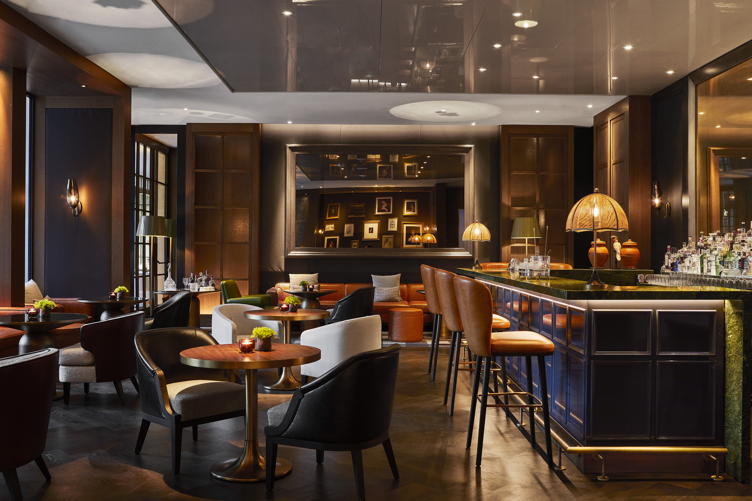
Photo Credit: Rosewood Villa Magna
The hotel offers four distinct dining outlets. Amós is the property’s signature restaurant, helmed by Michelin-starred chef Jesús Sánchez, with a menu that spotlights the Cantabrian Sea. Revolving around an eye-catching open kitchen,Las Brasas de Castellana is the hotel’s all day dining destination, serving everything from classic tapas and small plates to more elaborate meals highlighting the quality of Madrid’s meats, fish and vegetables.
My favorite venue is the bar and lounge concept, Tarde.O , which feels a bit like an English club through an elevated atmosphere that is equal parts cultivated, casual, and cool. Its unique new pedigree is that it’s premiere mixologist, Arturo Burzio, is formerly of Rosewood Villa Magna’s sister property, Rosewood London’s 50 Best Bars haunt Scarfes Bar. He brings a decadent and unique new vibe to Tarde.O that locals and visitors alike will note. The space extends outside onto a year-round, open-air terrace that serves the same delectable libations in a garden setting. There’s also the low-key eatery Flor y Nata for coffee, pastries, traditional afternoon tea, and light lunch and dinner.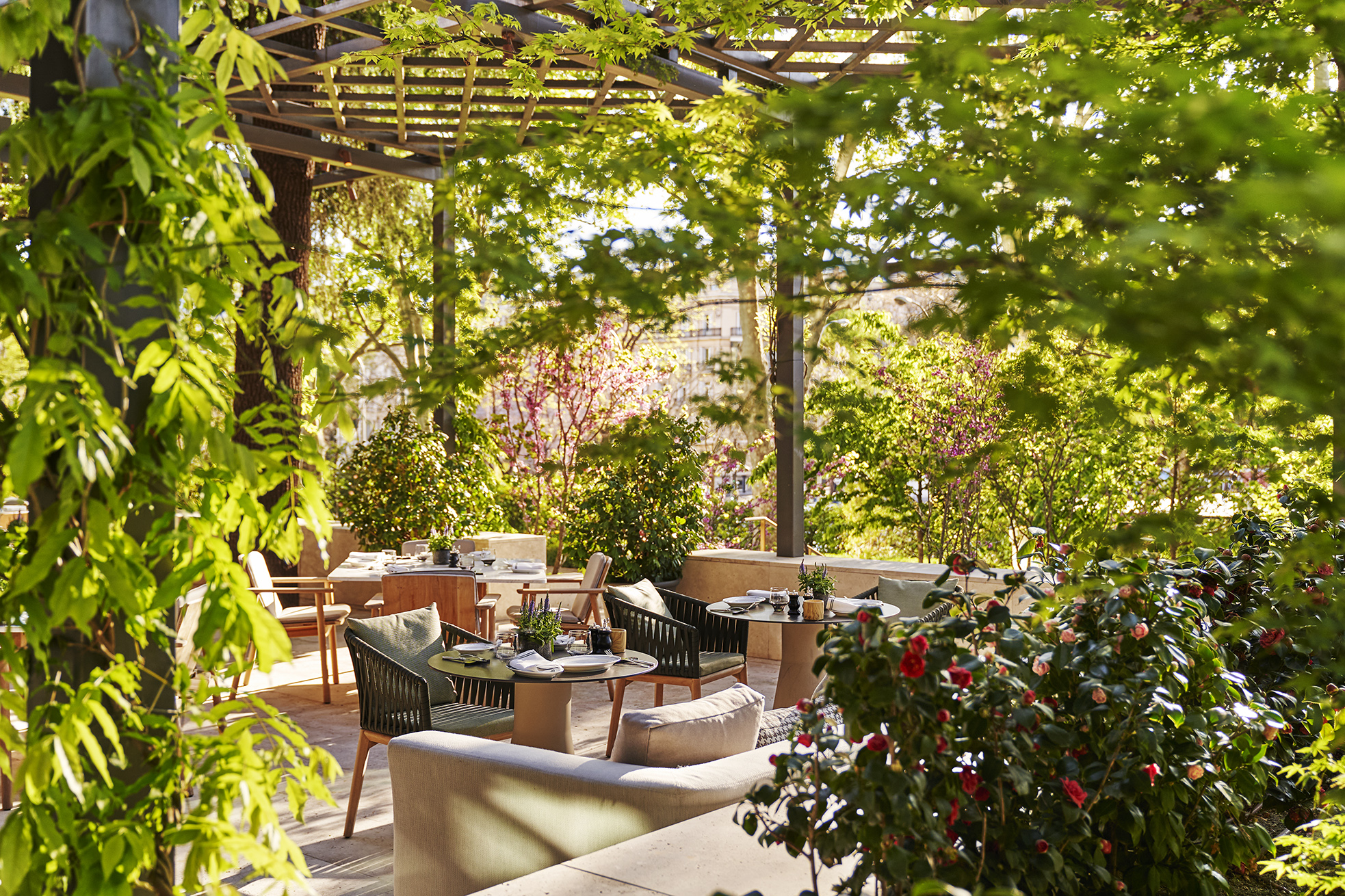 Photo Credit: Rosewood Villa Magna
Photo Credit: Rosewood Villa Magna
And then, the spa. The Rosewood’s signature brand, Sense, features locally inspired offerings dedicated to supporting both body and mind. Its Lost Remedies concept is at play here, of which highlights ingredients, practices, and traditions authentic to the cultures of Spain and the Mediterranean. This includes Sense of Balance, combining the benefits of both physical and mental wellness to achieve harmony between the body and spirit, and Sense of Individuality, tailoring offerings to the individual to bring about optimal results. There’s also facials such as the Special Lift, which is inspired by Japan’s ancestral beauty secrets and refined French elegance, and massages like the basalt and marble, which uses both for lymphatic drainage, massage, and hot and cold contrast therapy. There’s also a hammam and thermal area, as well as bathing rituals by Paris-based brand Charme D’Orient. The hotel is also home to the Claudia di Paolo Hair Wellth Spa, the world’s first Hair Wellbeing Spa. This unique offering introduces treatments based on the idea of hair longevity.
DINING
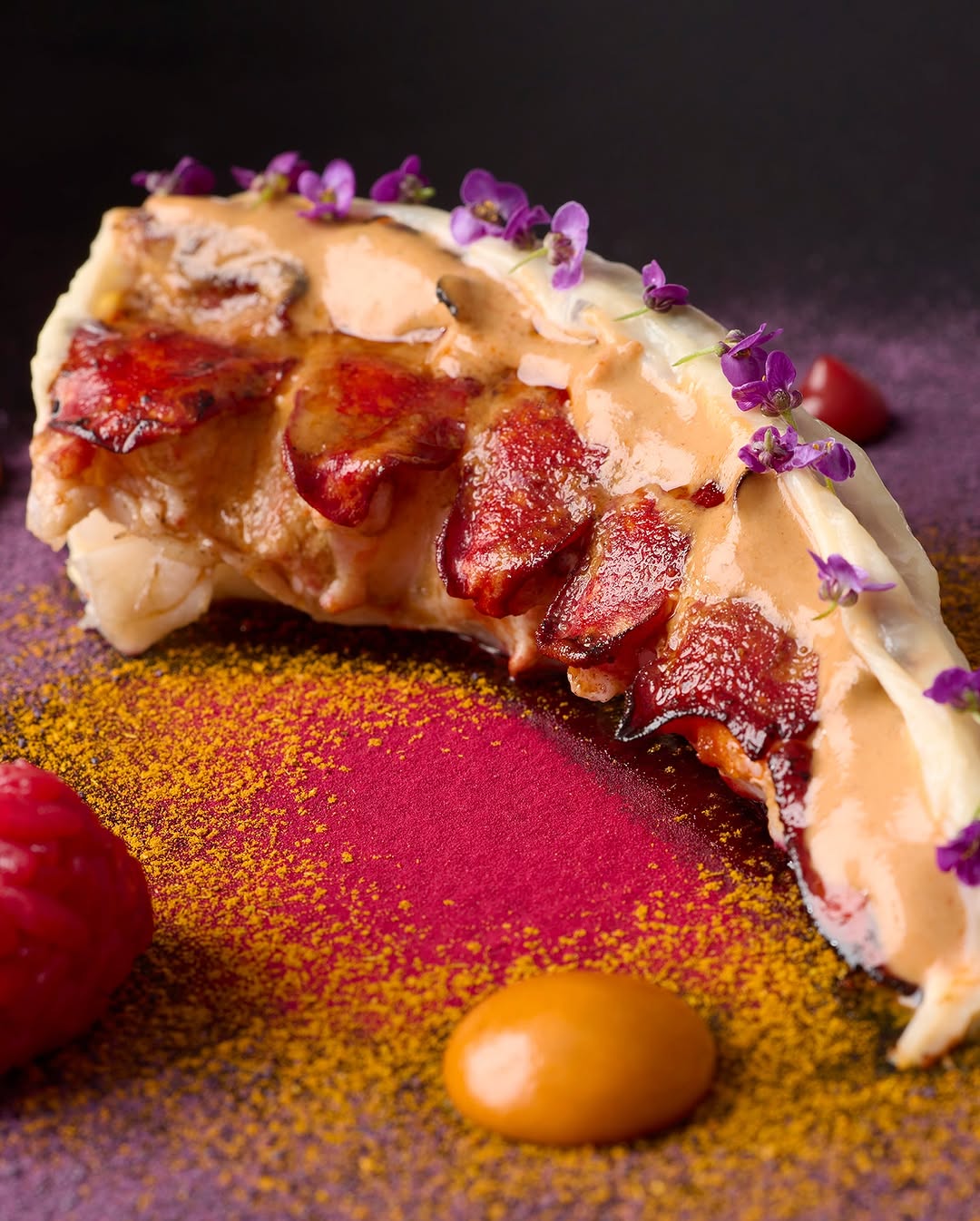
Photo Credit: DiverXO/Instagram
There may not be a restaurant in Madrid more recognizable than Dabiz Muñoz‘s DiverXO, an eatery which pushes culinary boundaries. It’s an evening of drama, pomp and circumstance, and theater, with unexpected pairings, most with Asian influences. Check out the flying pig theme throughout the restaurant, from wall hangings to art to crockery; here, it is a symbol of ambition, and who can’t get on board with that?
Other recommendations and restaurants of note include Deessa at the Mandarin Oriental Ritz, which features historical, Mediterranean-inspired tasting menus; DSTAgE, Vitoria-born chef Diego Guerrero‘s creative eatery is Salesas; Coque, a labor of love from the infamous Sandoval brothers Mario, Diego, and Rafael, in the Chamberi district; Smoked Room, a speakeasy-style eatery in the Hyatt Regency Hesperia Madrid, also from Dani Garcia, that offers one sole tasting menu, based around the culinary concept of lightly smoked and charcoal-grilled fare; and the eponymous Paco Roncero, located within the Madrid Casino, with the concept menus of “Esencia” (only lunchtime on Thursdays and Fridays) and “Afirmación,” all of which features a heavy use of olive oil — in the best way possible.
Madrid’s dining scene is having a renaissance—and the Elysian Tales food tour curates the city’s most coveted tables into one extraordinary culinary journey. At Saddle, fine dining reaches new heights through precision, polish, and a modern ode to classic gastronomy. Carmencita Taberna brings the spirit of the city alive with tapas that balance nostalgia and flair, the kind of neighborhood haunt that feels both familiar and elevated. Charrúa celebrates fire and simplicity with Uruguayan-style grilling at its most refined, where smoke and texture tell their own story. And at Guru Lab, Madrid’s most inventive chefs turn culinary experimentation into art. Together, they are stops on the Elysian Tales tour: a curated exploration of taste, design, and storytelling—crafted for those who believe that food is the truest expression of culture.
DRINKING
Salmon Guru
 Photo Credit: Salmon Guru
Photo Credit: Salmon Guru
The most lauded cocktail bar in Madrid is easily Salmon Guru, and with reason: walking into this whimsical cocktail bar in Barrio de las Letras is like entering a fever dream. The experience, curated by owner Diego Cabrera is such a vibe. It’s high-energy and interesting, packed on even a sleepy Tuesday night. From the moment you arrive, you feel that energy thanks to decor created by Argentinian studio Eme Carranza; there’s animal print at the entrance, a comics theme in the center area, and Asian influences in the back, all of which incorporate drawings, neon lights, manga, bottles with snakes, and a horizontal garden in what appears to be a nearly floating bar. The menu is broken down into fruity, refreshing, sour, what the f**k, strong, the untouchables, and zero-proof libations “for drivers.” All are served whimsically, with platters of shared food served the same way. Try the Full Moon: mezcal with papaya clarified with Greek yogurt, as well as coconut liqueur and ponzu sauce (it’s as interesting as it sounds). Another standout: the Ultravioleta, made with Ketel One, Cointreau, lavender, violet, and butterfly pea flowers.
1862 Dry Bar
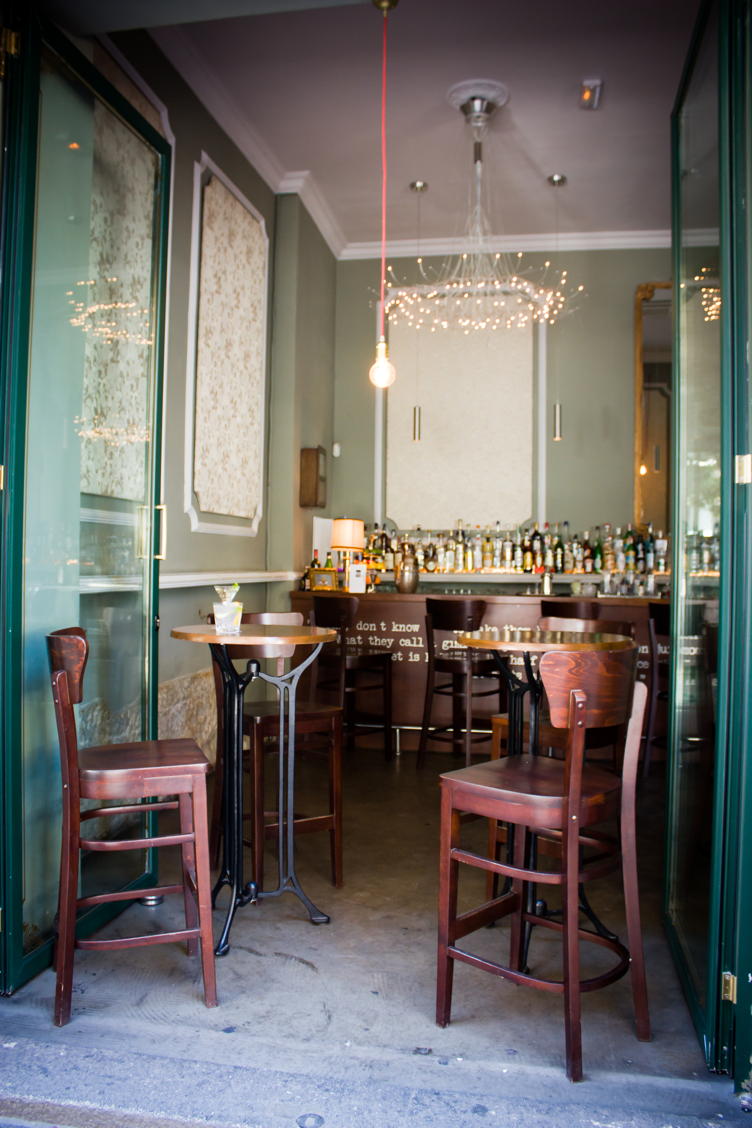
Photo Credit: 1862 Dry Bar
Located in the vibrant neighborhood of Malasaña, 1862 Dry Bar is a classic cocktail spot that does what it does — classic cocktails with a twist — exceptionally well. The name of the bar is an homage to the building in which it resides, as well as a subtle nod to the year that the first cocktail book in history was published (The Bon Vivant’s Companion by professor Jerry Thomas, for those who want to know). Some of the classics owner Alberto Martínez does exceptionally well include the Mint Julep, made with bourbon, sugar, and peppermint syrup; the Gin Fizz, made with gin, sugar syrup, lemon juice, and egg whites; and the Martínez, comprised of sweet vermouth, gin, Maraschino liqueur, and Angostura bitters. 1862 Dry Bar also utilizes sherry — some of which would go for quite a price in the States — and even offer a special “Sherry Week” slew of cocktails.
Momus
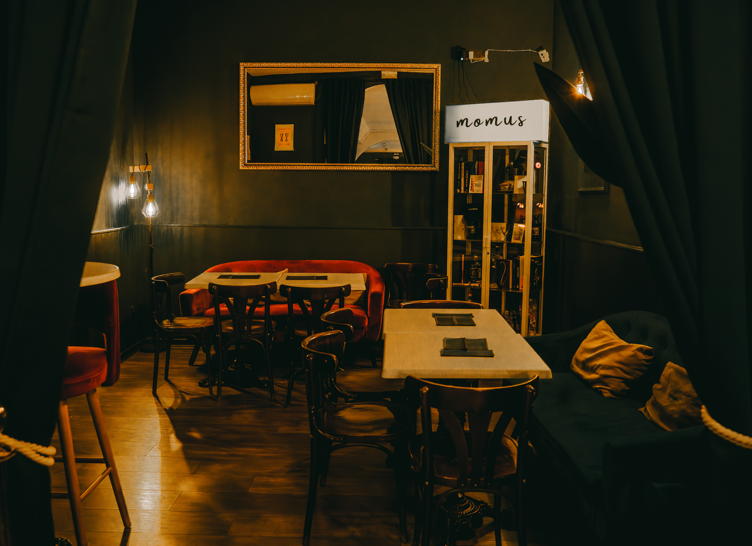 Photo Credit: Momus
Photo Credit: Momus
Momus is a bar bent on innovation, and change. Its menu is ever-evolving, with drinks and their signature tastes and elements based on colors, figures, and now ‘Growing’ — continuing to grow while seeing life through the eyes of a child. It spoke to me in many ways — the actual physical pictures depicting the idea behind the cocktail, and also by its meaning: a playful invitation suggesting we let ourselves be carried away by the details, colors, and designs without knowing the ingredients of each creation (which would have been nerve-wracking for this Meg Ryan in When Harry Met Sally, save for the drink description at the back of the menu).
Of the 12 new drinks, Alebrije is a must try if you’re lucky enough to get it: it’s limited to 15 serves only per day. It’s comprised of white tequila, mezcal, and a low-temperature lavender infusion balanced with colorful specks of white cocoa. Then, there’s Topolino, where pisco or chili is paired with an ice cream covered in white chocolate and matcha tea; Momus’ version of the Adonis, the Lady Bianca, with a hot texture of Parmesan cheese and quince. Other classics from previous menus, such as Maguey, La Chiquita, or the crowd-pleasing version of the Kingston Negroni.
Angelita
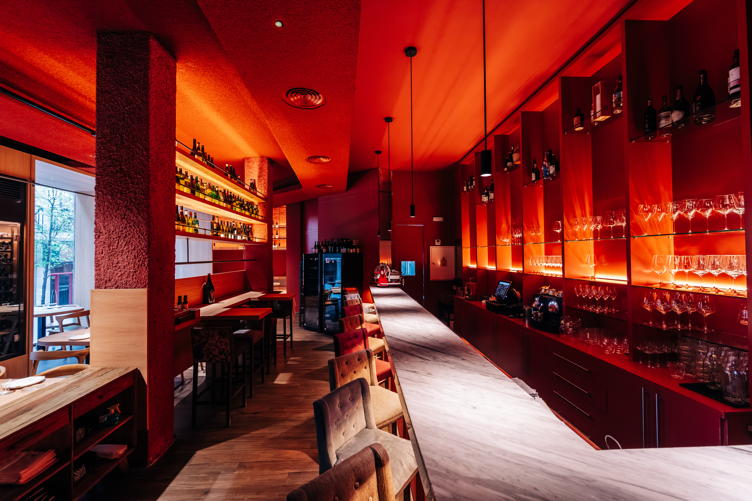 Photo Credit: Angelita
Photo Credit: Angelita
Angelita — a beautiful bar and restaurant in Madrid’s Chueca neighborhood — is a basement bar courtesy of Mario Villalón, who serves up a highly personal collection of spirits and cocktails combined with an international selection of wines and tapas. The intention behind his new menu is “Symbiosis”, based on the pairing of two or more plants. The term “plant association” was created by Alexander von Humboldt and Aimé Bonpland in 1805 and is used in Phytosociology. Drawing inspiration from this concept, the new menu at Angelita presents each drink as a representation of the association of two or more plants, resulting from Mario and his team’s extensive research into
the connections between them and their environment, giving rise to their own ‘Symbiosis’, placing much greater emphasis on seasonality and 100% product control through the integration of their own distilled spirits and no alcohol beverages.
In the menu, guests will discover different variations of symbiosis: cultural, as in ‘Melón y Jamón’ or ‘Oliva y Tomatera,’ which delve into Spain’s gastronomic culture by crafting cocktails that represent it; vegetal, the most representative, in cocktails like ‘Cebada y Judión’ (featuring whiskey, amontillado, red bean anko, and red barleyoncom); or vegetal-animal, exemplified in ‘Lechuga Marina y Almejas’ (made with palomino fino, clam distillate, sea lettuce, cucumber, mint, carrot, and cilantro).
The symbiosis isn’t only reflected in their drinks, but also in the glassware, where they reaffirm their commitment to eliminating the use of ice. They have introduced a line of hand-blown glassware featuring an inner gel that does not
expand when chilled, preventing it from shattering when frozen. The concept is also reflected in the physical menu, designed by the Jose Paino studio, which effectively highlights Angelita’s philosophy and its ongoing tribute to the honest traditions rooted in the family’s Zamoran garden.
Jack’s Library
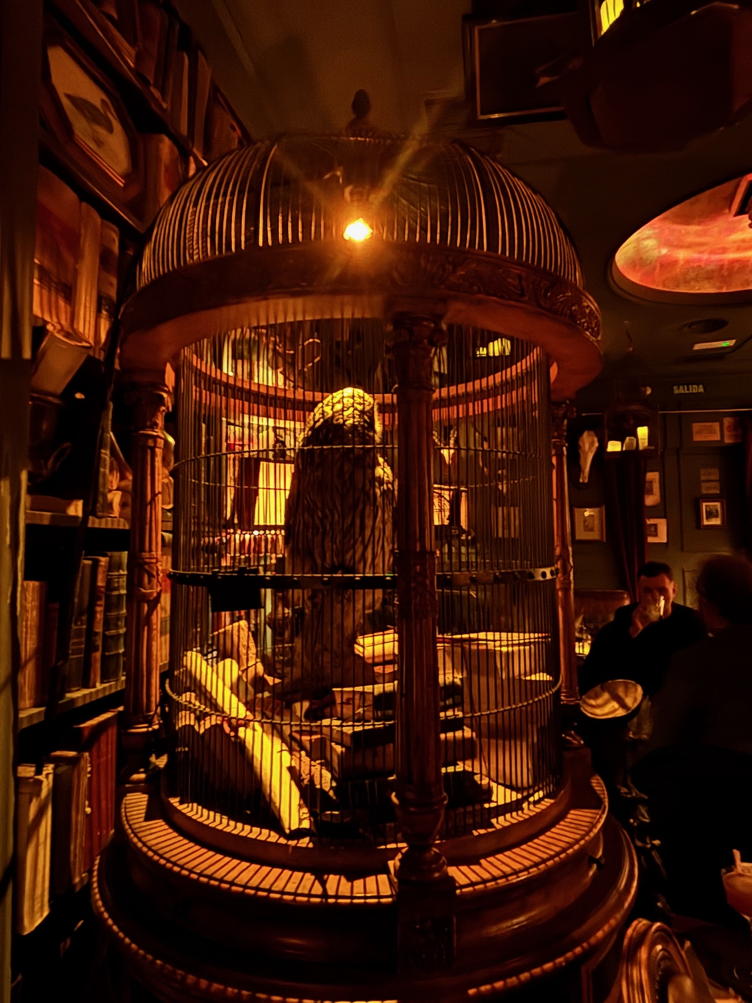
Upon entering the secret speakeasy Jack’s Library, you’re instructed to give a password — which you can find if you’re creative enough in the entranceway. Inside is a whimsical wonderland with a fabulous cocktail list — truly one of my overall favorite experiences in Madrid.


